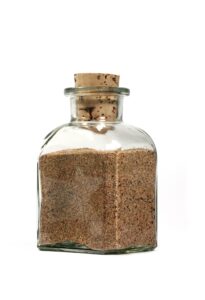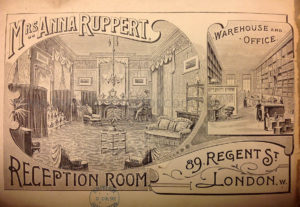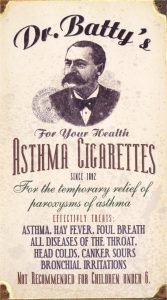Source: Western Journal of Medicine and Surgery (Louisville, KY), July 1855 Click here for Transcript
There are no prizes for guessing what was in this. First formulated in the mid 1830s by Dr John B McMunn (or M’Munn), it became a big hit in the US once a drug company called A B Sands bought the recipe in 1841. The dosage instructions gave plenty of room for manoeuvre:
To a child a month old, or younger, give from half a drop to two drops; to a child 6 months old, from 3 to 10 drops; and to adults from 10 to 60 drops (or even double or treble that much, if the pain and other symptoms be severe and urgent) mixed in two or three teaspoonsful of water, according to the size of the dose. As the administration of every medicine should be governed by its effects, it is proper to begin with the smallest dose, and increase or repeat it at proper intervals until the desired effects are produced.
Although a ‘secret remedy,’ the Elixir was popular with physicians and was advertised a lot in medical journals. One of its selling points was that it was supposedly ‘denarcotised’, and thought to be safer than laudanum. Not all doctors, however, supported it. In 1850, the Western Lancet (Cincinnati) ran an article suggesting that it was inappropriate for the New York Medical Gazette to promote this dubious nostrum. ‘All this,’ they insisted later, ‘was conceived in the kindest feeling to the editor, and with no other motive than to correct what we conceive to be a serious evil to the profession.’
The editor, Dr D Meredith Reese, didn’t take the ‘kindest feeling’ too well. He called the Western Lancet‘s article an ‘unprofessional attack’ and asserted that the Elixir was not a secret remedy – if the Lancet‘s editors didn’t know what was in it, that was down to their ignorance. The Lancet commented:
Now it is exceedingly amusing to hear the declaration made by Dr. Reese, that this article is not a secret remedy, and yet he is unable to give its composition! This is funny indeed…
…Perhaps his system of ethics, like his favorite elixir, is also a secret.
In 1864 the original recipe came to light, showing the process of treating opium with sulphuric ether to remove the narcotine and make the product safe – a nice idea but narcotine doesn’t have narcotic properties anyway, and the medicine certainly was not safe. It was as addictive as any other opium product – in the early 20th century, for example, George Pettey M.D. related the case of a woman who had taken the Elixir for 31 years, losing 16 newborn babies to the congenital effects.
Another danger – not entirely the Elixir’s fault – was the possibility of mistakes on the prescription. An 1860s physician prescribed the product for a little girl, but instead of elx. of opium, he put exl., and doctors’ handwriting being what it is, the apothecary interpreted it as ext. (extract) of opium – a much stronger preparation that resulted in the child sleeping ‘the sleep which knows no waking.’
A particularly tragic case occurred in Monroe, NY, in 1875. A 17-month-old boy showed symptoms of worms, and ‘By the advice of an old Florida woman, who said it would cause the worms which were supposed to be in the child’s stomach, to have a good sleep‘, the mother gave him 15-20 drops of elixir every hour, sending worms and baby to sleep forever. When his breathing became rapid and rattly, she carried him to the nearest neighbour, a third of a mile away, but it was too late.
The child never moved a muscle from half past 3 till it died, which was about 11 at night, living some 12 hours after the last dose. It is a sad thing to see the child cut down in health as it were, and at an age when all the cares of the parents and affections of its brother and sister were at its very height of enjoyment. The little fellow was at play in the morning as ever and at 11 at night was a corpse.
.
.
.
Many thanks to R L Ripples of TweetsofOld for the story from the Monroe Gazette and Courier.




Thank you so much for this site! I am researching children’s patent medicines , comparing old quackery to modern day quackery. I am on the board at Heritage Square Museum in Los Angeles. We have more than 80,000 vintage pharmacuticals in our Colonial Drug. I would be happy to send you images if you would like to have them. I’m a Developmental Psychologist, and became interested in quackery because of the proliferation of “cures” for ADHA
Hi Anita,
Yes, I’d love to see some photos please! My email address is on the Contact page.
I’m pleased the site has been helpful and I’m looking forward to hearing from you.
Caroline
What would be the best way to send them to you? Would you like individual emails, one photo at a time, or a bunch of pages? I don’t twitter or tweet or use facebook.
tried to email you and it was rejected